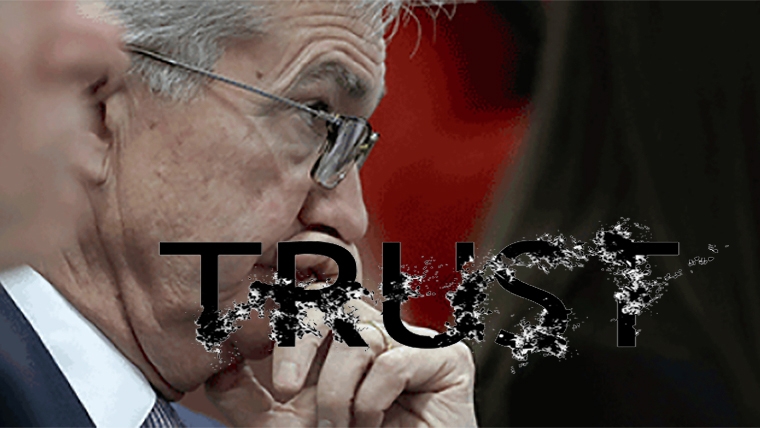
Reacting to Silicon Valley Bank’s sudden collapse, André Esteves, a senior Brazilian banking executive, recently told Bloomberg that “SVB’s interest rate risk would’ve been obvious to any banking intern in Latin America.” To some, this remark will sound rather rich coming from a region that has had no shortage of banking-sector problems. Nonetheless, Esteves’s sentiment is revealing, because it reflects mounting concerns around the world about the US Federal Reserve’s policymaking and its adverse spillover effects on other countries.
There are good reasons to be concerned. Just in the last three years, the Fed has mishandled its interest-rate hiking cycle, faced insider-trading allegations, stumbled in its supervision of banks, and, through inconsistent communication, fueled rather than calmed market volatility on several occasions.
These failings are becoming increasingly consequential for the public. Inflation has remained too high for too long, robbing people of purchasing power and hitting the poor particularly hard. Last month’s bank collapses were deemed serious enough for the authorities to “break the glass” by triggering the “systemic risk exception”; but this response could now impose a larger burden on all depositors. These developments, including the threat of less credit availability, have increased the risk of the US falling into recession, fueling income insecurity in what would otherwise be considered a strong economy.
The Fed’s problems should worry everyone. A loss of credibility directly affects its ability to maintain financial stability and guide markets in a manner consistent with its dual mandate of maintaining price stability and supporting maximum employment. I personally cannot recall a time when so many former Fed officials have been so critical of the institution’s economic projections, which in turn inform the design and implementation of its monetary policy.
International complaints about the Fed’s failings (and their adverse global spillovers) have been cropping up everywhere. Last October, Edward Luce of the Financial Times captured the mood well in a commentary with the headline, “The world is starting to hate the Fed.” And more recently, during their press conference, the Swiss officials dealing with the forced emergency sale of their country’s second-largest bank pointed to SVB’s failure as contributing to their problems.
Nor can I remember a time when markets have been so dismissive of the Fed’s forward guidance. The divergence between the Fed’s stated 2023 interest-rate trajectory and market expectations has been as wide as a full percentage point recently. That is a remarkably large gap for the central bank at the center of the global financial system. Markets continue to go against everything they have heard and read from the Fed by pricing in a rate cut as early as June.
Inconsistent Fed communication has not helped. Recent research finds that “Market volatility is three times higher during press conferences held by current Chair Jerome Powell than those held by his predecessors, and they tend to reverse the market’s initial reactions to the Committee statements.”
No wonder there have been extreme moves within the part of the yield curve that is heavily influenced by the Fed, and which serves as the basis for a host of domestic and international financial activities. Over the last few weeks, for example, the two-year yield traded in a highly unusually range of 1.5 percentage points, fueling talk – and not just within the specialised financial media – of “bonkers bond trading.”
These divergences all come on the heels of earlier Fed mistakes. After persisting in its characterisation of inflation as “transitory” for most of 2021, the Fed then failed to act promptly once it had belatedly “retired” that misdiagnosis. As a result, it ultimately had to slam on the brakes with an unprecedented series of four consecutive 0.75-basis-point hikes.
At this point, there is no denying that the world’s most powerful central bank has slipped in its analysis, forecasts, policymaking, and communication. That is the bad news. The good news is that the Fed can still right the ship by adopting a better strategic approach for its analysis and actions, and by addressing two major structural problems.
The first problem is groupthink: the Fed’s decision-makers seem to lack the viewpoint diversity and comprehensive expertise found in other major central banks. They would do well to follow the Bank of England’s example and add two independent external voting members to the Fed’s policymaking committee.
The second problem concerns basic accountability. While the Fed chair does appear before Congress twice per year, those hearings are not conducive to focusing on what really matters: Fed policy design and implementation. The process needs another layer of due diligence, with specialists in the field also reporting to Congress ahead of regularly scheduled testimony.
There has been much debate about whether the Powell-led Fed will be remembered alongside the (Paul) Volcker Fed for having conquered inflation, or alongside the (Arthur) Burns Fed for having opened the door to stagflation. My worry is that it may end up being remembered in a category of its own, as the Fed that undermined its own credibility, its political autonomy, and America’s crucial anchoring role at the center of the global economy.
Mohamed A. El-Erian, President of Queens’ College at the University of Cambridge, is a professor at the Wharton School of the University of Pennsylvania and the author of The Only Game in Town: Central Banks, Instability, and Avoiding the Next Collapse (Random House, 2016). Copyright: Project Syndicate, 2023, published here with permission.
18 Comments
The Federal Reserve is a financial regulator. The role of a regulator in any modern capitalist democracy is to promote the interests of the groups it is supposed to be regulating. This definition differs from our conventional understanding of regulators as a kind of industry-specific police force, but thanks to the process regulatory capture, it is a much more accurate description of reality than the one we're given.
The Federal Reserve takes this one step further. Despite the name, it is not a government institution. It is privately owned by its shareholders, which are by and large commercial banks. Any privately owned institution will necessarily act in the interests of its shareholders. [ This is just false. But it is a common barbeque conspiracy meme. promoted by a simplistic google search that gives a false answer. While it is true that to be a bank, they must 'buy' a shareholding in a regional Fed - a way to bind & enforce - and some directors come from some of those banks - the regional Fed boss is appointed by Congress and is hardly ever one of those directors. The US Federal Reserve in Washington DC has all its members appointed by the President and Congress, and is 'owned' by the US Government. It is just not owned or controlled by banks. Ed.]
[ Ed:- There were two points provided here. One is that the Federal Reserve is owned by its member banks through shareholdings. The other is that institutions will tend to act in the interests of their shareholders. I don't consider either of these points to be in the least bit controversial, much less a "conspiracy meme". If either one is wrong then I'm happy to be corrected on it, but I'm not sure the information in the link above achieves that. Shareholdings may not impart the same degree of ownership and control as a "normal" company, but it is still significant. Private member banks elect six of the nine members of each Federal Reserve bank's board of directors, for example. Chebbo. ]
The Fed does have to maintain some degree of credibility, otherwise people will simply grow tired of having the foxes in charge of the hen house. So when things turn sour, they have to at least make it look as though they're keeping things in check and acting in the interests of the general population. In general, however, the Fed - like any other privately owned organisation - is primarily focused on the interests of its shareholders, i.e. commercial banks. Seen through this lens, some of the recent actions taken by the Federal Reserve make a lot more sense.
Can you link to the author please?
Which author?
Ha ..really you wrote that piece?
Ha ..really you wrote that piece?
You have a problem with what Chebs wrote?
Yes .it's a cut and paste...
From where?
Yeah. You'd think I'd would have something better to do on an Easter Sunday, but apparently not.
Just been surfing all morning you?
Celebrating the reason for the season, the birth of the Easter Bunny. And surfing interest.co.nz.
Great comment Chebs. While I understand what you have pointed out, you articulated it very well. Better than most NZ journos could.
The idea of forward guidance is in itself destabilising. Removing the false certainty of forward guidance would force banks to act more prudently and be prepared for changing circumstances.
Forward guidance sits in the same realm as insurances, contracts and warranties.
The concept of some level of certainty and security seems a pre-requisite for investment.
The alternative would be a tragedy for consumerism. Who would buy a new appliance or a Mercedes if they knew it could all vanish tomorrow.
Except the banks are the very entities whose responsibility should be managing interest rate risk. That’s part of their job, like an insurer. They should be able to trust that a central bank won’t be capricious, sure, but if they have a false sense of certainty they’ll operate without a margin for error. Which leads to the present situation where CBs are either ‘disruptive’ and damage banks or else hamstring themselves and are unable to react to changing circumstances eg inflation.
The whole Central Banking system and its functions, including regulation, supervision, inflation fighting, etc needs to be reassessed. Today's Central Banks are not fit for purpose in today's world with multiple factors affecting the money and financial markets. Covid and Supply chain issues and the downturn in international trade, travel, etc were unexpected events.
There needs to be another International Conference like the Bretton Woods to relook at the Central Banks and may be replace them with a new avatar ?
If this hypothesis turns out to be true then the Fed would not be the only one with a credibility problem.
This Commentary explains how a Daisy Chain for financial stability stealth interventions might work. The evidence is growing, but only the Bank of Japan has confirmed stealth intervention in the JGB market, without detailing the mechanism. I first suspected allied central banks might be supporting the UK gilts market during the September 2022 crisis. I then suspected the same mechanism was used in JGBs in October and USTs in November. Let's take a look.
How much time is left before a system designed for endless growth fails to function due to a declining population and a planet with finite resources?
Or can it.
JBA,
"due to a declining population". Where? not in the US or globally. We will certainly see sharp population declines in Japan, China, S. Korea and a number of European countries like Italy and Spain, but thw world's population is still growing.

We welcome your comments below. If you are not already registered, please register to comment
Remember we welcome robust, respectful and insightful debate. We don't welcome abusive or defamatory comments and will de-register those repeatedly making such comments. Our current comment policy is here.